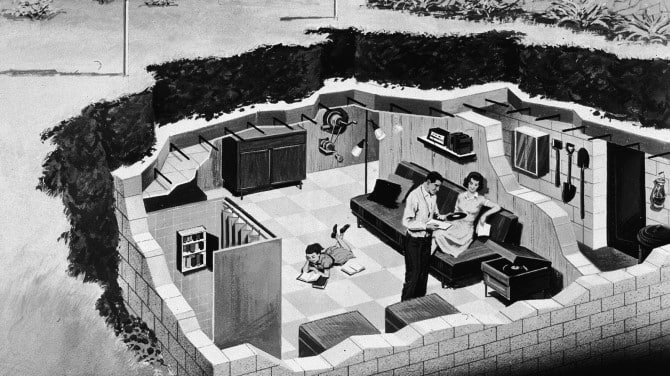5) Shelter

Whilst supplies and water are being gathered you need to make sure someone is getting a shelter sorted. A nuclear explosion spreads radioactive jazz all across the sky. The heavier and more dangerous fall out lands nearest the site of the explosion, but smaller and less dangerous bits and bobs will spread itself over potentially hundreds of miles and slowly fall over a number of days. You won’t be able to see it, but it’s there.
This dust emits radioactive shizzle that slips through walls like they’re not even there. It’s the bad stuff basically. The “good” news is that because this stuff gives off so much energy it loses intensity after a few hours and becomes relatively safe.
The only thing that can stop these harmful rays is mass. So you want as much mass between yourself and the outside world as possible, e.g. the large tubs of water you’ve been busy filling.
Your main priorities in this shelter that could be your home for the next few days are the following…
a) Get as much physical distance between yourself and the outside world
b) Put as much stuff, whether it’s wood, water, soil or concrete, between yourselves and the outside world
c) Make it as comfortable as possible, you may be in for the long haul
If you’ve got a basement that’s a good bet. If you haven’t then maybe you should start thinking NOW about a building nearby that you could commandeer should the apocalypse come.
If you’ve not thought it through and you live somewhere that’s basement-less take doors off their hinges and basically make a fort out of them. Surround that fort with any massive items like chunky tables, water bottles and mattresses and cross your fingers. It’s not going to be luxurious but if might just do the job.
Before getting into your den shut all doors and windows, block any exits to the outside world and say your prayers. Good luck.
…………….
This guide is by no means exhaustive. If the worst comes to the worst please don’t contact me, I will already be in Honolulu. Or dead.















